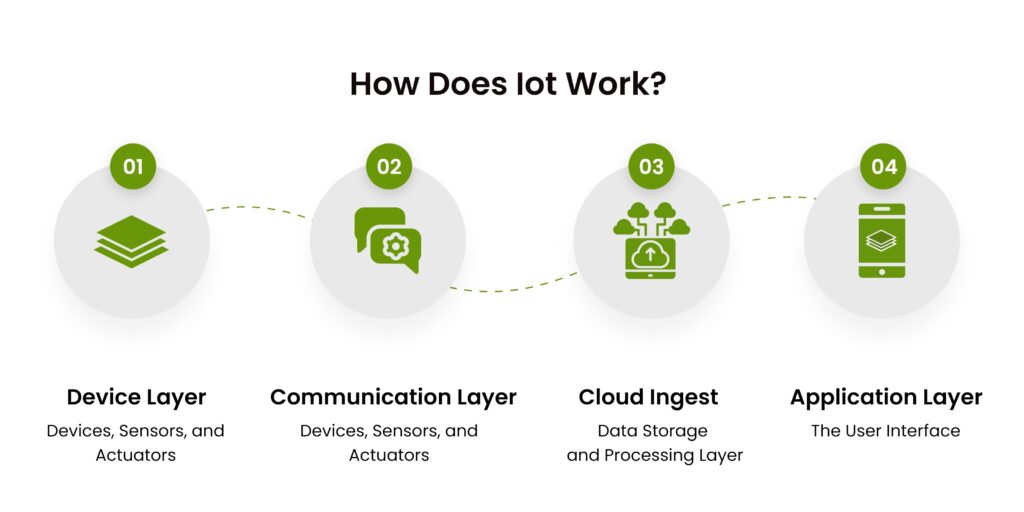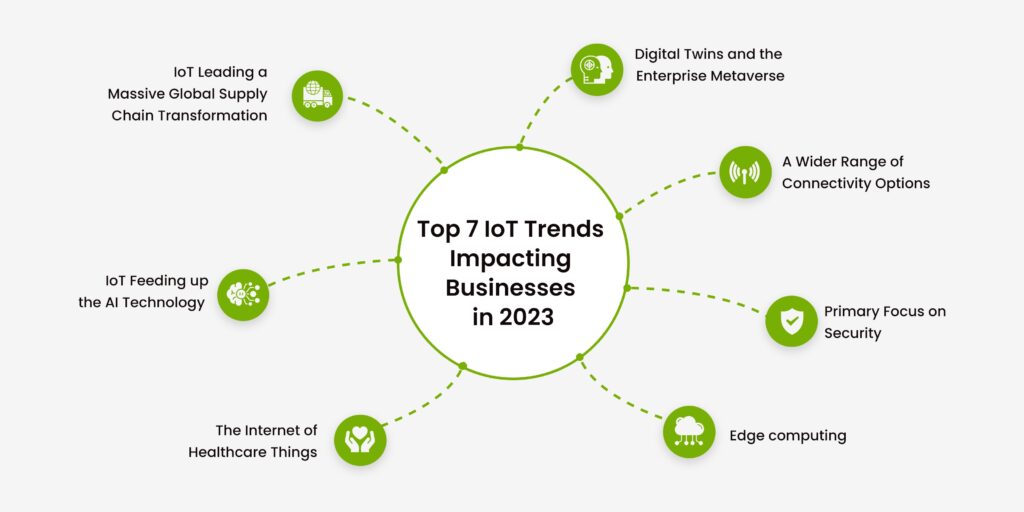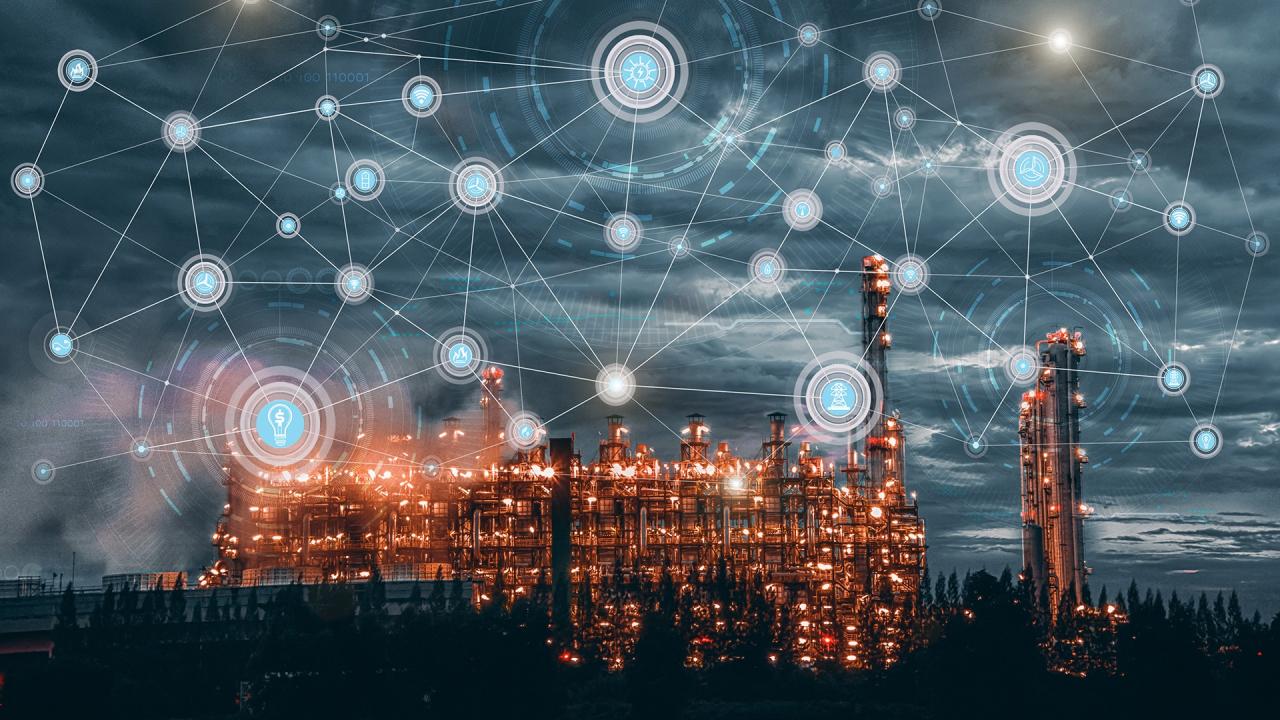When you hear or read the term IoT, what’s the first thing that comes to your mind?
Is it Alexa, the automated electricity controls at your home, the workplace’s biometric system, or the smartwatch connected to your phone and laptop?
These are examples of how seamless and convenient our lives have become because of IoT – the Internet of things. The concept of inter-connected devices came into existence over a decade ago, but today, it has begun dominating the other emerging technologies by empowering businesses and reducing a significant gap between the real and virtual world, marking its undisputable presence across the globe.
Thus, contemplating the emergence of IoT technology, in this blog, we will look at the intricacies of IoT technology and some of the top IoT trends that could shape the future of the business landscape in 2023.
Also, Read – Top IOT TRENDS of 2021
Without further ado, let’s start with understanding exactly iot technology.
What is IoT – the Internet of Things?
IoT – The Internet of Things which is also known as the Internet of Everything (IoE), is primarily an ecosystem of billions of interrelated physical devices, digital machines, and objects across the globe connected over the Internet, enabling a seamless transfer of data between the system in real-time, with minimum human interference.
In essence, making the world across the globe coherently connected, efficient, more responsive, and adaptive to the ultimate amalgamation of the physical and the real-time virtual universe.
How does IoT work?
As read above, we know that IoT at the core is a network of interconnected devices enabling seamless data sharing with minimum human intervention. These mini-processors leverage machine learning technology to process the collected data.
Now, to better understand the IoT architecture, let’s break down the entire IoT network into four core layers that enable seamless data sharing.

Device Layer (devices, sensors, and actuators)
The first layer of the IoT architecture is the device layer which elaborates on the devices, sensors, and actuators that initially enable the collection of data and control things at the core. The entire ecosystem of IoT technology begins functioning when these connected device layers, i.e., The foundation layer of the IoT network, sense and collects data from their actual world surroundings.
2. Communication Layer
Moving ahead from the foundation layer – the devices, the next layer playing a crucial role in the IoT ecosystem is the communication layer. The second layer is primarily responsible for transporting the data from the device layer to the cloud via a Gateway that often aggregates communications and intensifies data processing with many edge devices.
For instance, the contemplation of required security functionality, device or system authentication, encryption, and malware protection is done in this layer.
The common methods of transporting data in the communication layer include:
- HTTP/S
- Bluetooth
- RFID readers
- FTP
3. Cloud Ingest, Data Storage and Processing Layer
Once the data is transported or delivered, the next IoT architecture layer actively working is the data processing layer. The third layer of the ecosystem is structured to pre-process the data and enable advanced data analytics.
Simply put, the third layer is either located in the gateway or the cloud, depending upon the complexity of the application and network implementation. This layer adapts, monitors, manages, and accesses the edge analytics of the real-time data collected through the devices using machine learning.
Thus enabling the IoT devices to monitor the data, analytics, and patterns to adapt the functioning and then process the data and information based on the pre-determined edge analytics derived from using machine learning technology within the layers of the IoT architecture.
4. Application Layer
The fourth layer of the IoT architecture is primarily located in the cloud and is known as the application layer or user interface, where the data is made available to the end-user applications via alerts, notifications, texts, or emails.
While the accelerated use of automation has significantly revolutionized IoT devices’ functioning, some practical actions might require being enabled by the traditional user interface in the fourth layer.
Then, once the fourth layer of the IoT architecture has processed the data on the cloud, the activities that require manual intervention are enabled to monitor system performance, identify problems, act accordingly, and notify the end user.
Also, Read – CHALLENGES INDUSTRIES FACE IN IOT IMPLEMENTATION
Significant Advantages of IoT for Businesses
Here’s a quick rundown of the top advantages for businesses leveraging the IoT – the Internet of Things and its cutting-edge technology to increase the efficiency of different aspects of the business.

Enhance End-user Engagement and Experience
Integrating IoT with business offerings empowers businesses to equip their end-users with unparalleled customer service and experience, as IoT enhances the overall efficiency of business products and services.
In most cases, the integrated IoT sensors proficiently foretell problems and alert the responsible team in case of any system disparity, even before it occurs.
Thus enabling real-time problem identifying and solving without any system downtime or hampering the customer’s experience with the product.
Increase New Business and Revenue Opportunities
From streamlining operational efficiencies to understanding customers’ behavior, employing IoT business solutions can help gather your customer’s behavioral patterns and thus help gauge their interest and offer a personalized experience.
Especially for B2C businesses or e-commerce businesses, integrating IoT technology can help them offer the most relevant products and services based on the gathered statistics through IoT applications, thus offering improved customer acquisition and revenue opportunities.
In addition, IoT-driven business modernization could create robust use cases, diminish time to market, and amplify return on investments.
Enhance Operational Productivity & Efficiency
Integrating the Internet of things in business can eliminate the need to employ human resources in mundane tasks and let the leaders utilize human resources where they need human brain for complex problem solving, cognitive thinking, and solution building, resulting in enhanced productivity and efficiency as every associated employee of the organization will be happy to be engaged in contributing the best of their skills for the growth of the organization.
Trimming down operating costs
Another advantage of employing IoT business solutions is the reduction of costs and the ability to sustain business operations better. However, organizations can only leverage this benefit of IoT technology by employing smart devices interconnected over the Internet and supporting the dynamic adaption of market demands with more innovative solutions based on comprehensive operational insights while dipping the associated operating costs.
Perk up business and workplace safety
The next significant benefit of employing IoT business solutions is creating a highly secure work environment for the employees.
Integrating IoT-enabled devices can facilitate business leaders ensure the utmost workforce safety and security. Especially in high-risk workplaces like manufacturing units, factories, construction sites, etc., proffering IoT applications, wearables, and sensors, which can be constantly tracked, can alert against any associated danger or problem that might require immediate supervision, thus ensuring all-time active surveillance.
Top 7 IoT Trends Impacting Businesses in 2023
With the prediction that the global Internet of things (IoT) market to grow from $478.36 billion in 2022 to $2,465.26 billion by 2029 at a CAGR of 26.4% in the forecast period, its easy to contemplate that IoT technology will grow and help businesses make the best use of their data in all ways possible.
As for businesses looking forward to leveraging the IoT technology, it’s crucial to tap into the key trends impacting businesses and how this technology will be utilized in the coming 2023.

Digital Twins and the Enterprise Metaverse
Two of the most discussed technologies of 2022 were non-other than Metaverse and Digital Twins, technologies bridging the gap between physically existing real and virtual worlds.
In the coming year 2023, we can expect a convergence of these two technologies with IoT technology to make the best possible use of data.
Businesses will potentially be able to dig deeper into the data derived through IoT devices and then will be able to build a better digital replica of their business landscape for a better understanding of how they work, monitor customer behavior, enhance customer experience, predict breakdowns, and ultimately generate new revenue opportunities.
Also, Read – HOW IS DIGITAL TWIN TECHNOLOGY DRIVING THE FUTURE OF BUSINESS?
A Wider Range of Connectivity Options
The accelerated pace of IoT technology and the increased adoption of IoT business solutions have proffered the marketplace with a broader range of connectivity choices for IoT in two main ways. One by enhancing the existing technologies like LPWAN and two by introducing newer technologies like 5G.
And it is due to these two ways, especially with the proliferation of 5 G’s ultra-low latency and higher data transfer rates, that we’ll possibly continue to get our hands on exciting new IoT business solutions built to evolve and improve businesses, science, and even the overall quality of lifestyle worldwide.
Additionally, one of the significant IoT trends in 2023, which is easy to predict, is the exponentially growing desire of business leaders and tech professionals to explore the IoT in business and leverage the multitude of IoT technologies for growth and scalability.
Primary Focus on Security
As the technologies evolve and businesses adopt these emerging technologies, we will witness complex safety challenges cropping up from technology diversification. Thus leading enterprises and business leaders to shift their focus toward the security of IoT-enabled connected devices.
As a result, the globally acknowledged security concerns will enable IoT product development companies to improve sellability by highlighting the importance of combatting cybersecurity threats and having measures in place.
Also, Read – TOP 7 CYBER SECURITY THREATS & PREVENTIONS FOR ENTERPRISES
Edge computing
Another emerging technology that we can expect to elaborate its reach in the Internet of Things as iot trends in 2023 will be edge computing.
Edge computing is an IoT computing strategy that enables IoT devices to gather and process the data at the edge instead of re-sending the data back to a data center or cloud. When leveraged together, IoT and edge computing proffers an efficient way of rapidly analyzing the data in real-time, providing greater control and flexibility.
The Internet of Healthcare Things
Since the advent of IoT technology, we have witnessed the healthcare industry-leading in innovation and benefitting from IoT technology. From leveraging IoT to enhance patient care, wearables, and facility sensors to using IoT devices for tracking, and indoor navigation tech, the healthcare sector has been making the best use of IoT business solutions until now.
With the prediction of the IoT-enabled health device market to hit $267 billion by 2023, another IoT trend 2023 we expect to witness is some game-changing business implementation of the IoT technology. From the proliferation of wearable technology for consumers to the increased adoption of IoT in building more competent healthcare facilities, we will witness the best use of IoT technology in the healthcare sector.
Also, Read – BENEFITS OF USING the INTERNET OF THINGS (IOT) IN THE HEALTHCARE INDUSTRY
IoT Feeding up the AI Technology
As enterprises transform digitally and adopt technologies like AI and IoT, it’s no exaggeration to say that these technologies have been natural allies complementing and enhancing each other’s functioning and implementations.
When integrated, these two technologies scale up efficiency and work toward offering the most unimaginable human-machine communication, real-time data gathering, and analysis.
And witnessing the unparalleled benefits of amalgamating the two technologies, we can expect an evolved cross-pollination of this pair for future-forward tech and increased adoption of AIoT devices that will enhance, improve, and enrich the overall businesses’ digital experiences by many folds.
Also, Read- THE ROLE OF IOT IN ARTIFICIAL INTELLIGENCE
IoT Leading a Massive Global Supply Chain Transformation
As IoT technology continues to commodify, another sector that moves towards digital transformation is the supply chain.
As we know, IoT technology is primarily an ecosystem of interconnected physical devices that can monitor, report on, send, and exchange data over the Internet. Employing IoT business solutions in the supply chain accelerates the core of the supply chain industry, for instance, predictive maintenance, real-time shipment monitoring, smart inventory management, etc.
Therefore, as companies begin to realize their business’s shortcomings in the coming year, another significant IoT trend that we will witness will be vendors poised to become increasingly bolder in adopting IoT business solutions that will further increase supply chain velocity and efficiency.
Conclusion – IoT Won’t Stop Growing Any Time Soon
With all that we read, we know the constant growth of the Internet of Things will continue, and we will witness active adoption of IoT technology in unpredictable business sectors.
As for business leaders, the coming year, 2023, will poise the best time to employ IoT business solutions and accelerate the pace of their business, enhance overall efficiency and productivity.
For those who do not know where to begin, seeking guidance from top IoT product development companies like Copper Mobile, one of the digital transformation leaders in the world equipped with proficient business transformation consultants and a proven track record of offering the most unparalleled IoT business solutions can help you tap into the future trends in IoT and help pave the way for becoming the fastest growing IoT companies. Reach out today!



